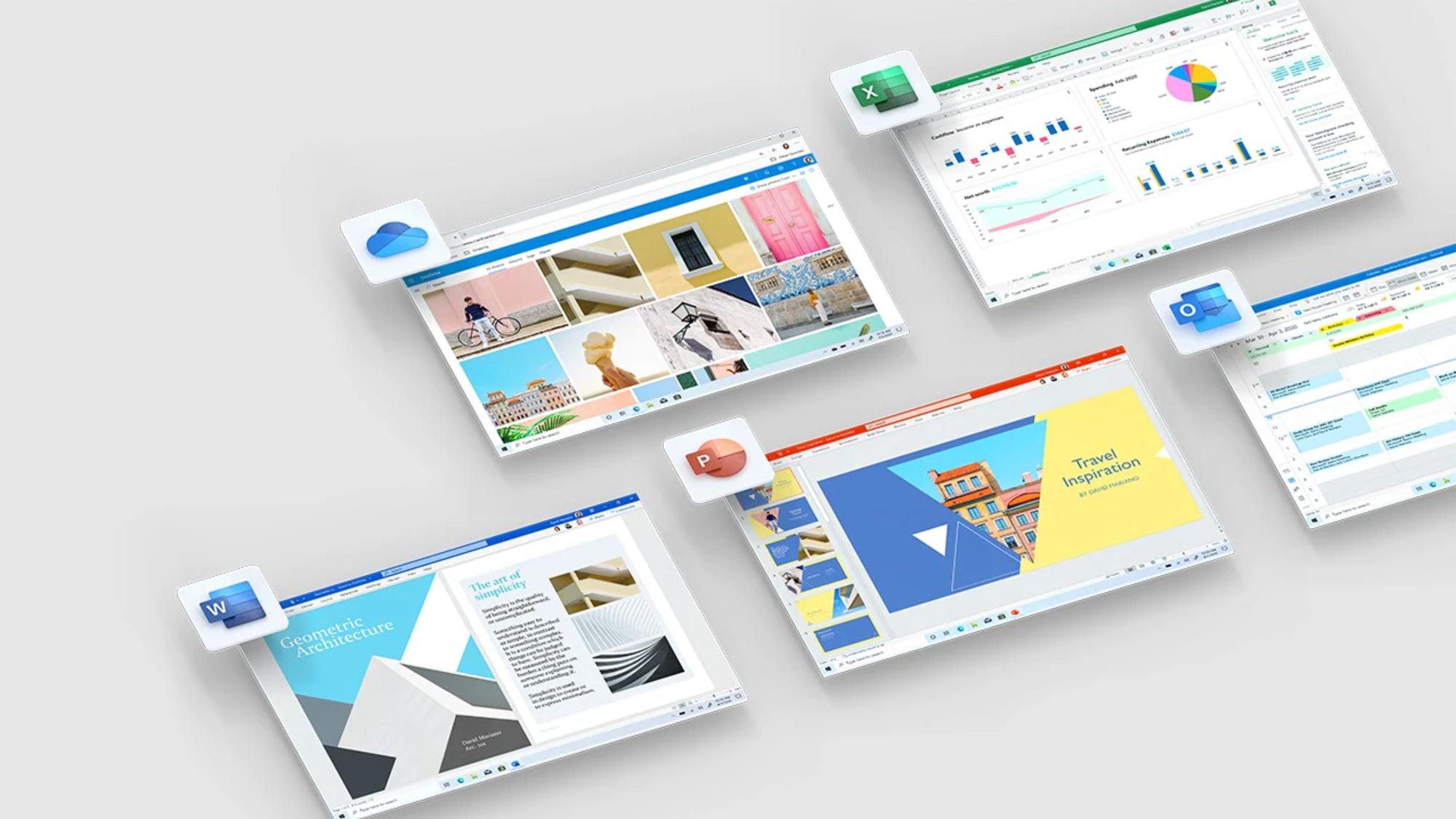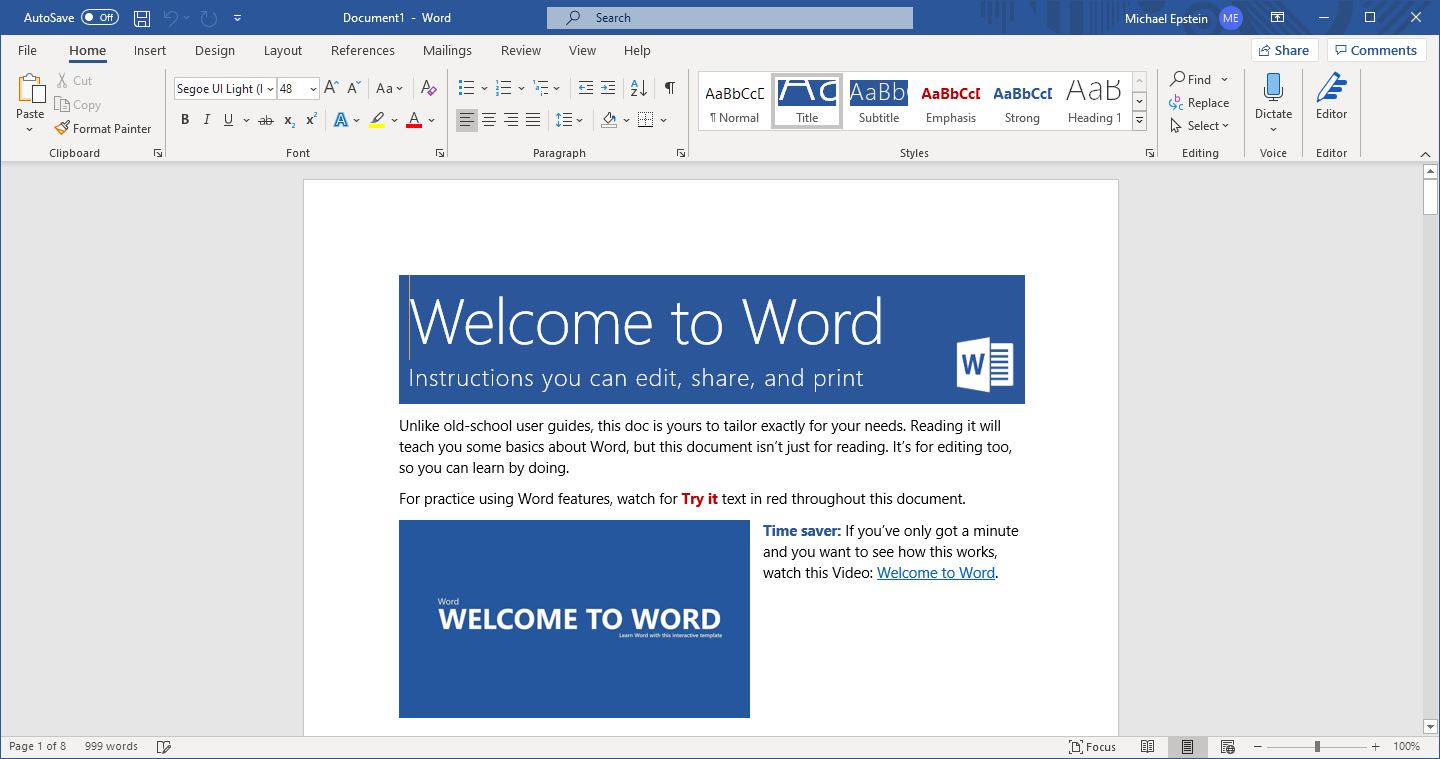Microsoft 365 Personal vs. Office 2019: A suite bundle battle
Which Microsoft bundle is right for you?

Like so many essential apps these days, Microsoft has repositioned the Microsoft Office app suite as a service. Microsoft 365, an annual subscription, gives you access to the full Microsoft Office experience, including support for multiple devices and supporting services like OneDrive cloud storage. And while $69.99 per year doesn't seem like a lot for an essential piece of software, it isn’t insignificant, either. It feels particularly expensive for casual users, who only need Office occasionally.
However, the company has an option for people who may balk at the prospect of paying a monthly or annual fee for something they’re used to buying outright. Office Home & Home Student 2019 has a one-time price and gives you access to the core apps of Microsoft Office -- Word, Excel, and Powerpoint -- but without the web apps, cross functionality and some other modern features.
If you’re choosing between the two, there are only two questions you need to ask. First, what apps in the Office Suite do you actually use, and in what ways? Second, do you use Office enough to justify spending money on it on an annual basis?
We’ll walk you through the major differences, with an eye towards helping you answer these questions and figure out which version of Office will be right for you.
| Row 0 - Cell 0 | Microsoft 365 | Microsoft Office Home & Home Student 2019 |
| Price | $69.99 per year / $6.99 per month | $149.99 |
| Apps | Microsoft Word, Powerpoint, Excel, OneNote, Publisher, Outlook, Access and Skype | Microsoft Word, Powerpoint and Excel |
| Devices | One login across multiple devices | One device |
| Tech Support | Yes | No |
| Internet required | Yes | No |
Price
So, as we previously stated, Microsoft 365 is going to look better than Office 2019 on paper. It has more apps and more features. There’s no tangible benefit to buying Office 2019, except that you only have to pay for it once.
Microsoft charges $69.99 per year or 6.99 per month (totaling $83.88 per year) for Microsoft 365 Personal access. You can buy Office Home & Student 2019 for a single payment of $149.99. Taking the long view, if you only care about getting the three core Microsoft Office programs — Word, Excel, and Powerpoint — for your primary PC, it’s significantly cheaper to buy Office Home & Student 2019 long-term.
Winner: Office Home & Student 2019
Sign up to receive The Snapshot, a free special dispatch from Laptop Mag, in your inbox.

App Bundle
Although Microsoft 365 and Office Home and Student 2019 are both technically Microsoft Office app bundles, they have very different offerings. Microsoft 365 is, for all intents and purposes, the default version of Microsoft Office. It offers the full suite of apps, including premium access to Microsoft’s non-Office productivity tools.
- Microsoft Word (Word Processor)
- Microsoft Excel (Spreadsheets)
- Microsoft Powerpoint (Presentation Builder)
- Microsoft OneNote (Note-taking, and research)
- Microsoft Outlook (Email Client)
- Microsoft Access (Database design)
- Microsoft Publisher (Digital and Print Layout Software)
- Microsoft OneDrive (1TB of Cloud Storage)
- Skype (60 Minutes of Voice and/or Video Calls to Non-Skype users)

Office Home and Student 2019, by contrast, is a barebones version of Microsoft Office that gives you offline versions of the core apps:
- Microsoft Word (Word Processor)
- Microsoft Excel (Spreadsheets)
- Microsoft Powerpoint (Presentation Builder)
Admittedly, those are the three most important apps in the suite. Even now, most people buy Microsoft Office for Word and/or Excel, so it’s possible that the lack of tools won’t phase you in the slightest. Still, the difference in the sheer amount of apps you get for your money is staggering.
If you’ve come to rely on any of the other apps, or think you’ll need them, you’ll have to fork out extra dough to get access.
Winner: Microsoft 365
Connected Apps
There’s a significant difference between the “premium” versions of Office, Excel, and Powerpoint you get through Microsoft 365 and the standard versions of Office 2019. With the personal version of Microsoft 365, Office is tied to a single account, but you can install and use the apps on any device once you log in. That means you can install it on multiple PCs if you have them, phones, tablets, etc. Office 2019 works the old-fashioned way: It’s locked to a single device.
It sounds like an extravagance, but having the ability to access these apps on virtually any device can be a lifesaver. I’m not one to write in Word or create a Powerpoint presentation on my phone, you’d be surprised how often you may want to take a quick glance at a file, email it to someone, or print it.
That said, there is a de facto workaround. Microsoft offers a free web-based version of Office, which you can use to create simple documents, spreadsheets, or presentations and even edit existing files. However, you’ll need to stash them on OneDrive (or otherwise transfer them to your secondary device) beforehand. There is also a free version of OneNote, which doesn’t come with Office 2019.
The web version of Office doesn’t have all the advanced features of the standard app, but you won’t notice the difference for the vast majority of daily work, especially with Word. The other caveat, of course, is that these apps require internet access to log in, and many of their features, including auto-saving, only work when you are online.
Winner: Microsoft 365
Technical Support and Updates
In pivoting to a subscription model, Microsoft reserves most of its technical maintenance efforts for its paying members. Depending on your familiarity with Office (and PCs in general), buying Office 2019 may make you feel like you’ve been left out in the cold.
There are two elements, here. First, paying for a subscription to Microsoft 365 includes access to Microsoft’s live technical support. With Office 2019, you get 60 days of customer support: After that, you’ll need to figure things out on your own using Microsoft’s troubleshooting resources, forums, etc. In over 20 years of using Microsoft Office at home, I don’t think I’ve ever called Microsoft technical support outside of needing information for a story like this one, so while it’s nice to have, it isn’t as important as it sounds.
Second, Office 2019 is the “current” version of Office 2019, but it is static. Microsoft said it will add new features and improvements to Microsoft 365 apps over time, which users will get access to as part of their subscription. Office 2019 will not gain access to those features and, eventually, Microsoft will release a different version of the software, and you will need to pay for a new piece of software to get those improvements.
Crucially, both Microsoft 365 and standard Office 2019 will get regular bug fixes and security updates, which patch holes in the software and keep it running smoothly. Microsoft continually maintains all of its software even after multiple revisions, so you won’t need to worry about Office 2019 going completely obsolete for some time.
Winner: Microsoft 365
Overall Winner
| Row 0 - Cell 0 | Microsoft 365 | Microsoft Office Home & Home Student 2019 |
| Price (25) | 15 | 25 |
| App Bundle (25) | 25 | 15 |
| Connected Apps (25) | 25 | 10 |
| Technical Support and Updates (25) | 25 | 15 |
| Total (100) | 90 | 65 |
While it can feel like a bitter pill to swallow, most people will be better off paying a premium for the ease and convenience of Microsoft 365. The ability to pay one price (each year) and have the entire Microsoft Office suite no matter where you are and what you’re doing feels essential, especially if you use the included apps across multiple devices.
But people who are looking to save a few bucks and don’t need all the premium feature that Microsoft 365 offers should be fine with Office Home & Home Student. And if you’re looking for web connectivity, consider Google’s web app suite which gets you Google Docs, Sheets, and Slides for free.




